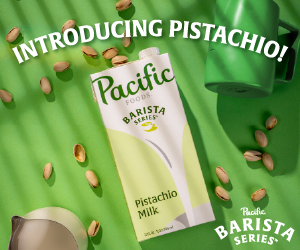[T]he Cowichan Valley on Vancouver Island is a place for sunny, weekend morning drives, windows rolled down to feel the warmth of the air and hear the wind in the coniferous trees. With much to be seen on the scenic drive up Richards Trail, a hanging rectangular sign with green text will likely change a visitor’s route. The new path leads to fields canvased in luscious greenery that surround a rustic brown barn and a house. Tall Douglas fir, hemlock, cedar, and maple trees that enclose the land rustle high above, but the forest floor and farm fields are protected from any harsh winds, and tranquil.
Driving down the slope unveils, with a surprise, rows of flourishing tea plants. Amid the tea are Victor Vesely and Margit Nellemann, husband and wife and owners of this unique place nestled in the valley. Their passion for this unlikely project is heard in their voices and seen in their expressions as they share their experiences with those stopping for tea. Their personalities and farm emit a sense of calm that is helping them introduce a new kind of tea experience to Canada—one that grows from the country’s soil.
That calm is useful, since confusion and doubt may occur upon hearing about the world’s newest tea origin, one much farther north and across an ocean from traditional tealands. But on their eleven-acre organic farm in the Cowichan Valley, Vesely and Nellemann have found Canada’s most tea-friendly micro-climate. Cowichan, an anglicization of the word quw’ustun’, which means warm land in Hul’qumi’num*, has the warmest average temperatures in the country. This makes it prime for growing many varietals of grapes, and now, it is home to Teafarm.
[W]hen Vesely and Nellemann purchased the farm on Richards Trail in 2003, the idea was to make and sell tisanes, food, and art, especially ceramics. They named the venture Artfarm. The farm grew many garden vegetables and a variety of flowers and herbs for herbal infusions, their most popular creation at the time. Vesely and Nellemann took it upon themselves to develop Canada’s first tea plantation after they had difficulty finding organic, high-quality, loose-leaf tea in bulk. Being environmentally conscious, the couple thought if they could lessen the footprint a little bit and actually have tea growing in their own fields then they would be doing their part for the earth.
The pair had little experience to draw on for this project. Vesely developed a deep passion for tea while studying tea culture in Japan and traveling throughout China. Nellemann had a farming background from growing up in Denmark, where her family grew berries and apples, but fruit plants are a far cry from tea. Still, they jumped in.
The journey to serious tea growing began in May of 2010 when the couple decided to make tea the farm’s primary focus and rename the business to reflect that objective. That month, 200 Camellia sinensis seedlings were purchased from a US nursery, brought to the farm, and planted. A harsh first winter of lessons followed. The worst was a ten-day stretch when the temperature hit about negative fifteen degrees Celsius (five degrees Fahrenheit). They covered half of the plants for protection. Unfortunately, after the freeze a big snowstorm ultimately caused more damage by crushing the covered plants.

“The first winter was the first experiment to say we are not even going to cover the tea plants because we will end up losing them to breakage more than to the snow,” says Vesely. “The snow ended up actually protecting the uncovered tea plants more because they were insulated.” He and Nellemann knew they were on to something pretty positive when only one plant was lost through the rough season. “The farm wants to grow tea,” says Vesely.
Vesely and Nellemann’s confidence throughout their five-year experiment is admirable considering the hurdles they’ve faced, including some very dry summers (up to thirty-eight degrees Celsius or 100 degrees Fahrenheit) and intermittent freezing in the winter. The Canadian climate was only one of many challenges. During the second year, a deer ravaged the entire crop. But even after almost losing their field of tea plants, Teafarm found a silver lining. Vesely found that the stress the deer’s damage caused to the tea plants made them hardier and that would create a more intense flavor. “It still remains an experiment to this day but every year and every day something new is thrown at us,” he says.
Teafarm began pruning, harvesting, and processing tea in the first year of their experiment, and this year will sell the tea for the first time. Every year they have tried different processing methods. “Through limited research on how to process tea, we are self-taught in that department,” Vesely says. “It is very hands on. We have had the privilege of learning from the leaf itself.”
They have made white, oolong, and green teas during their tests. The experiments happen in the barn on the property where a wood-burning stove, outdoor fire pit, and covered drying area are located. White tea, the smoothest and most graceful of their teas, is air-dried and offers a subtle aroma but a round, sweet, grassy taste. Pan-fired oolong, a hand-rolled tea, presents strong muscatel notes with young earthiness. Green kukicha, which is steamed, is soft and luminescent. They believe their most successful flavor profile comes from both their lightly oxidized and heavily oxidized oolongs. The region a tea is grown in is very important and it affects flavor, aroma, and other qualities. Vesely says their oolongs have hints of Darjeeling, and an extraordinary sort of muscatel.
Vesely and Nellemann haven’t relied on counsel from any tea agronomists throughout this project. They’ve gotten this far in part due to experimentation: they’ve thrown every traditional and non-traditional growing technique at the plants to see what will produce the best quality tea overall. These methods include heavier pruning on some plants, pruning upwards, no feeding at all, and, similar to techniques in Assam, breaking branches to stress the plants prior to pruning to see how they react. In addition to not using any synthetic essences or flavoring in their teas, Teafarm does not spray or use any chemical fertilizers or pesticides. Fortunately, the Cowichan Valley is very fertile. The valley allows them to grow the tea on well-drained slopes and offers the purest, freshest water to hydrate the plants.

Today the tea plantation is thriving with just over 600 Camellia sinensis plants (400 were planted in spring of 2014). “Coming into maturity, it is really exciting because of the flavor profiles and the different tea styles we are doing,” Vesely says. Playing with the lapsang souchong style, Teafarm has been maple-smoking some of their tea for both culinary and drinking purposes. Described as a robust cup offering a caramel and mineral finish, it is prepared in their customized smoke shed using fully oxidized tea leaves and maple wood from nearby trees. “It is uniquely Canadian and West Coast,” he says. “That will be fun to share with the tea world because we will then have more volume after our harvest.”

In the lead-up to their first offering, they have been marketing the Canadian tea through their teashop, word-of-mouth in the tea community, and their extensive mailing list. The enthusiasm from the public has been noted and they have a waiting list. Fortunately, Teafarm already got a taste of what it would be like to provide the world with their unique tea by selling fresh leaves for culinary purposes at local farmers’ markets last year. Culinary-grade matcha has also been produced, often used as a topping or garnish for cakes and other treats sold in the teashop, an old barn that doubles as an art gallery for Nellemann’s funky clay teapots and dining ware she makes at the farm (read more on Nellemann’s ceramics). If the clean white walls of the teashop could speak, they would share wonderful, steeped stories from visitors around the world enjoying their selection of teas, sweets, cakes, chocolate truffles, and other treats for pairing.
Weather contingent, Vesely anticipates Teafarm’s harvest season to commence this month or next. Exciting times, but venturing to the farm may be required to have a taste. With the ambition of being the home of tea production in Canada, Vesely and Nellemann plan to offer a unique, Canadian tea experience. With public access to the farm, an art gallery, and a teashop filled with blends and tea-infused recipes, they are en route to creating a niche worth the trek. “We pride ourselves on being a very collective tea experience here,” Vesely says. For those living far away, the tea will be offered online, however, due to their current volume, there are no plans to move into the wholesale direction right now. This may change in the future when they reach their goal of 3,000 to 4,000 plants covering the property. Teafarm may be well on their way, too, as they will be planting more seedlings this spring.
“To be better than anything else is not our intention,” Vesely says. “It is just to make the best tea that we can.”
—Lu Ann Pannunzio is a tea blogger and marketing consultant based in Ontario, Canada.
*Correction: a previous version of this story misidentified the word quw’ustun’ as the language the anglicized word cowichan derived from. Hul’qumi’num is the language and quw’ustun’ is the word that cowichan comes from.





















